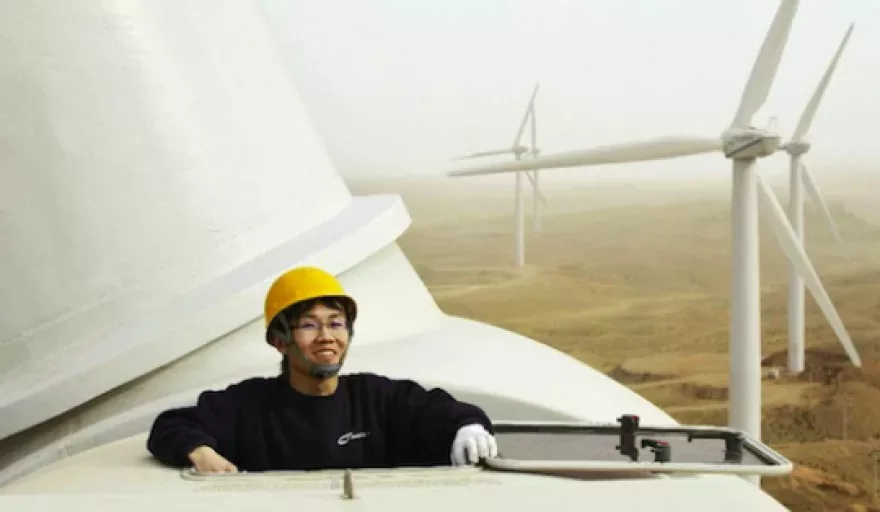Over the past decade, Asia has made huge strides in developing clean energy and with the low oil prices it has levelled the playing field for renewables and has significantly decreased manufacturing costs.
In a new report by the World Bank, Asia surpassed other continents, accounting for 60 percent of the global progress in renewables and energy access. Several factors are used to determine this number which are all directed towards the following three goals to be fulfilled by 2030:
- Achieve universal energy access
- Double the global rate of improvement in energy efficiency
- Double the share of renewable energy
The report further indicated that renewable energy in Asia grew by eight percent, with the annual global renewable consumption rate rising by four percent. While the World Bank revealed that Asia had made the most progress in clean energy, it also exhibited which areas still needed improvement.
In this case, it’s energy efficiency. They’re moving in the right direction but more effort is needed to end this energy poverty, as more than one billion people still lack easy and direct access to power. Prices for solar panel and wind turbine manufacturing and technologies might be more affordable than it was in the past, yet in order to increase such energy efficiency, more investment is still required in renewables.
Investment in this area is the main obstacle in Asia’s rate of progress. Government budgets are already maxed out in developing economies, so the majority of project funding will have to come from banks, however new regulations on their liquid assets make them more hesitant in extending loans.
Asian Development Bank (ADB) states that financial institutions are being pressured into divesting fossil fuel equities, bonds and other assets, so there’s an opportunity to redirect their finances towards renewable energy development.
“Most renewable energy projects have high initial costs and very low operating costs,” the ADB adds.
The drastic climate changes in the past few years are a definitive factor of evolving energy policies, and the rehabilitation of aging power infrastructures are the way to tackle our existing climate troubles.
At the end of the day, Asia must supply sustainable energy systems that promote prosperity and growth on all fronts; a statement made by World Energy Council Co-Chair, David Kim while discussing the impact of climate change during the Clean Asia Energy Forum 2015.
Much of the focus has been placed on China and India because of their positions in sustainable energy. They’re still in the early stages of clean energy development and they must become more active in modernising the industrial sector, energy efficiency programmes, and pollution reduction schemes; all of which are necessary for sustainable growth according to the UN Industrial Development Organisation.
Out of the two countries, China is the largest destination for clean energy due to the amount necessary to improve its entire energy infrastructure.
Several banks have analysed both nations to make an approximate estimation on how much is needed to fund their projects, so that they can achieve their environmental goals. They expect that China will require around two trillion yuan from both domestic and international benefactors, a year, for a period of five years.
In India, they’ll need about $200 billion just to meet its renewable installation targets, so it is very likely that additional financing will be required after fulfilling these initial goals. This applies to other countries as well, so if you were ever wondering just how much capital Asia needs, it’s a lot.
Despite the developments in renewables and the demand for energy efficiency, fossil fuels are still the main source of power in Asia. They may be pollutive and contribute to climate change but cost is always going to come into play. Coal is very cheap, and studies show that use of coal will increase by nearly 50 percent in 2035 from 2010 levels.
Asia relies less on oil and gas as sources of power but still are a vital component to their economies. Some of the world’s largest crude oil & gas producers are in Asia, and these exports are their main source of income.
Nations such as Iraq, whose economy is primarily driven by oil & gas production – although they constantly face security challenges due to armed conflict – consistently capitalise on their oil and gas-rich fields, and continuously receive funds to boost operations.
Just a few months ago UnaOil partnered with an Iraqi energy company to help repair damaged gas compressor stations.
Unless the rest of the world take a step back from fossil fuel consumption, Asia will continue to produce oil barrels by the millions per day and deter the global objectives in energy efficiency and renewables. More financing is necessary in Asia’s clean energy, but if you look at the bigger picture, more investment is evidently needed on a global scale.
In the past ten years, Richard has worked in several prestigious financial institutions across Asia as an economic analyst. Soon he will move to England this year to study at the London School of economics, pursuing his PhD in Environmental Economics.
By Richard Chang



































